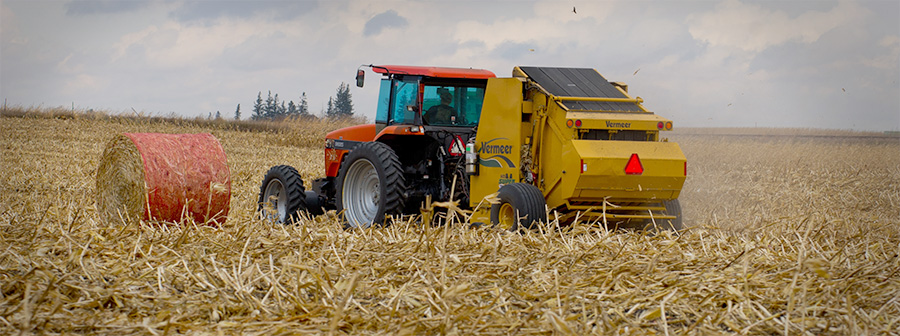Removing a reasonable portion of the corn crop residue from a field after harvest can be a positive part of a good farm management plan. This continues to be the conclusion after six years of research at the Project Liberty site near Emmetsburg, Iowa and for other high-yielding corn production sites across the U.S. Corn Belt.
A recent study by an assistant professor at the University of Nebraska – Lincoln claims, in a nutshell, that every leaf removed from a field produces a corresponding loss of soil carbon, which is then emitted into the atmosphere. After building a model around that concept, he concludes that cellulosic bioethanol from crop residue is worse than gasoline over a 5-10 year lifecycle.
The data and expert recommendations from the larger academic community dispute that claim.
At POET-DSM, through the combined experience of our parent companies, we have a mountain of knowledge in producing biofuels and enzymes, in building and managing large production facilities, in research, marketing and every other step of the process. But for soil sustainability, we recognized that we needed to go outside of our own walls to get the best input possible regarding the impact of harvesting biomass.
Over the last six years, we have commissioned work at the Emmetsburg site to monitor the soil on different plots of land that receive varying harvest treatments. Dr. Douglas Karlen with USDA-ARS and Dr. Stuart Birrell with Iowa State University have led this research as a small project within their coordinated national effort to identify and develop sustainable crop residue harvest strategies. Based on the data – from Emmetsburg and elsewhere – they continue to recommend that as much as two tons of biomass can be safely removed from fields that yield 180 bushels per acres or more.
POET-DSM is asking farmers to harvest only one ton per acre (about 25% of the available material) as we make our first foray into commercial cellulosic bioethanol production.
I asked Dr. Karlen for his take on the UNL professor’s study. Dr. Karlen’s work was actually cited multiple times in the UNL study. He sent me a summary of his response.
“This article makes unrealistic assumptions and uses citations out of context to reinforce the authors’ viewpoint,” he wrote.
According to Dr. Karlen, the research fails to differentiate between responsible biomass removal and “excessive” biomass removal. This makes an enormous difference. The UNL study projects a removal rate of approximately 75% across the entire Corn Belt.
“Harvesting 75% of all corn stover produced in the 10 Corn Belt states is unrealistic, far greater than any projections made by the U.S. Department of Energy (DOE) in their projections for developing a sustainable bioenergy industry, and would certainly result in the depletion of soil organic matter.”
Response Comments to Liska et al. (2014)Douglas L. Karlen, USDA-ARS/NLAE
Reasonable removal rates, however, are another story. Dr. Karlen said that on high-yielding corn fields, the large quantity of biomass means that a portion can be removed safely while leaving enough material on the ground to protect the soil from wind and water erosion and replenish soil nutrients and organic matter. The important point is that farmers have good nutrient management and harvest practices and that they understand their own fields, including which areas are high-yielding and which areas are low-yielding. This is what the researchers mean by understanding “sub-field variation” (i.e., leave the hilltops unharvested but feel free to remove a portion of the residue from areas where it is likely to be creating “residue management problems”).
Dr. Karlen is not alone in his take on the UNL model.
* The Great Plains Institute says, “The academic literature on cellulosic biofuel systems still overwhelmingly supports the conclusion that these systems offer deep GHG emissions relative to gasoline. This paper is unlikely to alter the consensus view.”
* U.S. Secretary of Agriculture Tom Vilsack told the Des Moines Register that the research makes assumptions that aren’t a reality. “If you make the wrong assumption, you’re going to come up with the wrong conclusions. It’s unfortunate.”
* The Environmental Protection Agency released a statement saying, “This paper is based on a hypothetical assumption that 100 percent of corn stover in a field is harvested; an extremely unlikely scenario that is inconsistent with recommended agricultural practices. As such, it does not provide useful information relevant to the lifecycle GHG emissions from corn stover ethanol.”
Thorough and ongoing soil management research has been an integral part of our development of commercial-scale cellulosic bioethanol. We continue to commission research at the Emmetsburg site, and we continue to share those results with our farmers so they can make informed decisions. As construction on our first commercial-scale cellulosic bioethanol plant nears completion, we are excited to start producing some of the cleanest fuel in the world.







